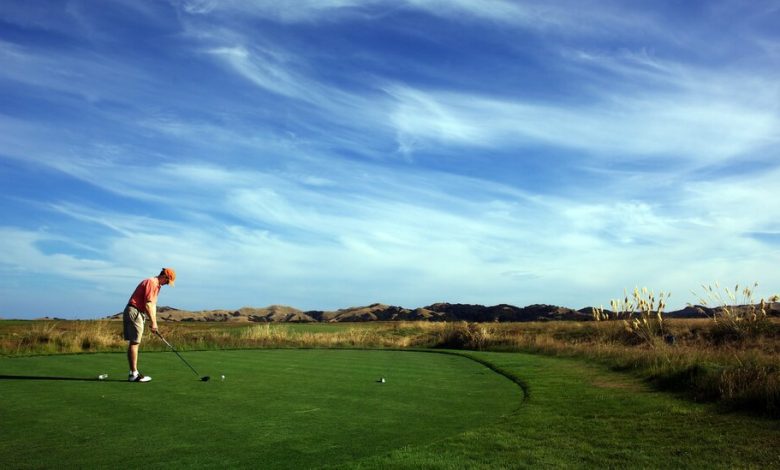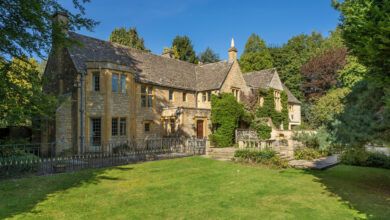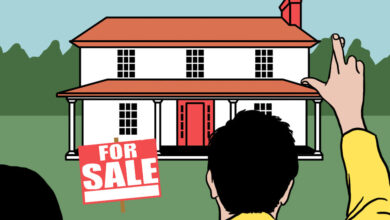Finding the Balance Between a Golf Course and a Golf Community

Golf may be one of Scotland’s gifts to the world, but the golf community — a course surrounded by real estate — is almost purely an American idea. A flyover of the American Sun Belt will show you homes packed tightly together with threads of green fairways running through their mostly parallel lines.
Early in his career, the golf course architect Tom Doak chased golf community projects as he hunted work, but “I quickly realized I didn’t have the kind of name that would be attractive to someone wanting to buy a homesite,” he said. That lack of brand value may not be as apparent today as Mr. Doak has seven of his courses in the world’s Top 100, according to Golf Magazine. In Golf Digest, Doak has four designs among the Top 100 and seven others he has helped remodel.
Though Mr. Doak does not do a lot of developments, he is acutely aware of how one must incorporate housing, lodging, a clubhouse and other infrastructure into a world-class design without ever distracting from the golfing experience. The following interview has been edited and condensed.
What are the challenges of designing a course when you know homes will be present? What are the things you consider?
The biggest challenge is whether or not you will be allowed to put the golf holes where they fit the topography, or whether you will have to rebuild the topography around where the homes need to go.
Every developer says they have given the golf course architect free rein on where to place golf holes, but that’s actually pretty rare, because it’s not efficient in terms of use of space. Developers don’t want to build a road with houses on only one side; that’s way more costly. So, a lot of times, if the property is going to be densely developed, you start with lots and roads from the outside boundary working in, and that width has a lot to do with determining where the golf holes will go.
Your new project, Te Arai Links in New Zealand, features homes along the 18th fairway. That kind of housing arrangement seems to be designed for the course to be showcased when one looks outside. Does that affect how you might make the hole look? Or do you think more about how you might make the surroundings look for the golfer playing the hole?
Well, as at Pebble Beach, the homes on the 18th at Te Arai are looking across the fairway toward the beach and the ocean, so I don’t know that it’s important for the features of the golf hole to stand out for the homeowners. You probably just want the fairway to look like your backyard. There might be some cases where I think about how a hole will look from the lots, but for the most part, my focus is on what the golfer will see.
Homes set back a reasonable distance from the edge of the fairway are not that distracting, but if homes start to creep into the line of sight for the golfer playing the hole, then it starts detracting from the golfer’s feeling of playing “out in nature.”
The American model of a golf community is not one that has been replicated very often internationally. Often the homes get the best land at the expense of the course. Can you speak to communities in America or internationally that you think have managed to achieve a balance?
Lots of famous older courses have homes around the perimeter of the course — Merion, Winged Foot, Pebble Beach. Others, like Yeamans Hall or Fishers Island, were master planned to marry golf and real estate as we do today, but they were only trying to get 50 lots around the golf course, not 250.
It’s when you build homes between the golf holes, that the priorities are truly flipped. There were tons of those sorts of golf developments built across America in the past 50 years. The lots got sold, and the developer was happy, but in the long term, many homeowners decided they didn’t really like having the course right in their backyard, where the maintenance crew is mowing a green at 6:30 in the morning, and where a stray shot into the backyard happens every couple of days.
How can good course design aid the development of not only housing but other essential golf infrastructure such as a clubhouse, maintenance buildings, and even restroom and eating facilities?
If we are thinking about the community as a whole while we design the course, we can incorporate things together much better. I’m working on a plan now where the halfway house for the course will be right next to a community park, so it can be used not just by golfers but by everyone who lives there as a great picnic spot.
If we understand the land plan, we may be able to incorporate walking trails through the course, so residents can really enjoy the value of the open space the course provides. That’s harder to do in America because everything is so litigious, and the safety of nongolfers is a concern as is potential vandalism to the course. But my experience from overseas is that when the two are integrated, the residents come to understand the rhythms of golf and when it’s safe to proceed — even if they know nothing at all about golf — and the golfers respect the safety of their neighbors.
One of the first projects you worked on was Long Cove Club in Hilton Head, S.C., built by your mentor, Pete Dye. Many of the homes on that course are hidden from golfers, though they are not far from the course. What did you learn about routing a course on that project that you carry with you today?
Nearly every hole at Long Cove is surrounded by homes on both sides, but the corridor for the golf holes is wider than normal — 400 feet instead of 300 — and there were lots of trees on the site. We only clear about 150 to 200 feet of trees for our fairways, so there’s 100 feet of trees on each side of the hole before you get to the homeowner, whether he cuts down all his trees or not. That’s enough to make it feel like you are playing through the trees, not through the homes.
Pete’s one rule was that he didn’t ever want to see a home located behind a green, where golfers would aim at it. The lots are always to the sides of the holes, but they don’t wrap around them.
Source link






